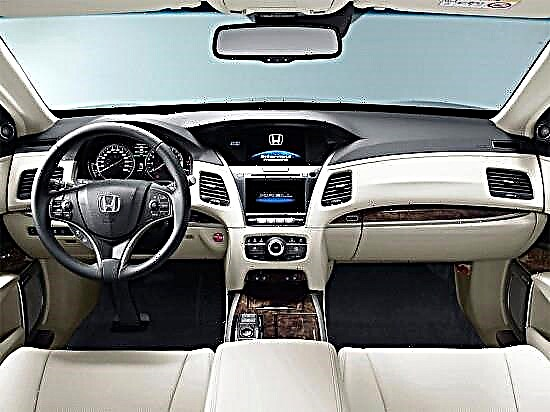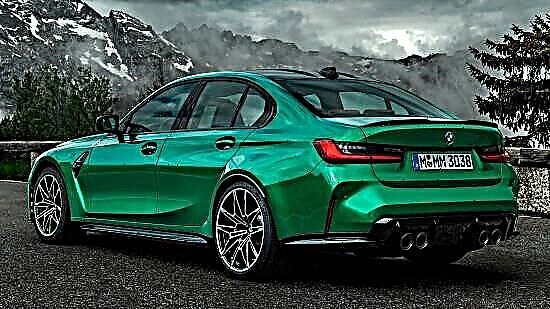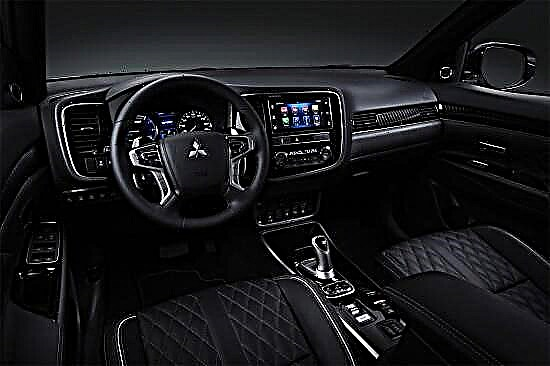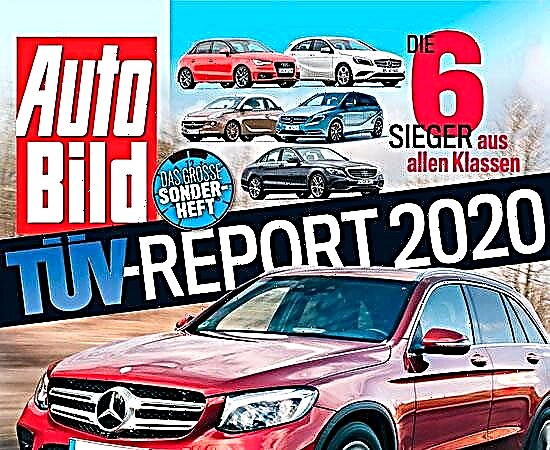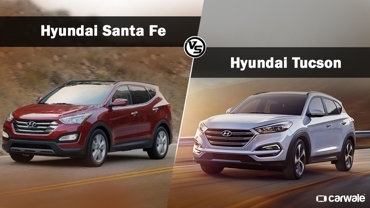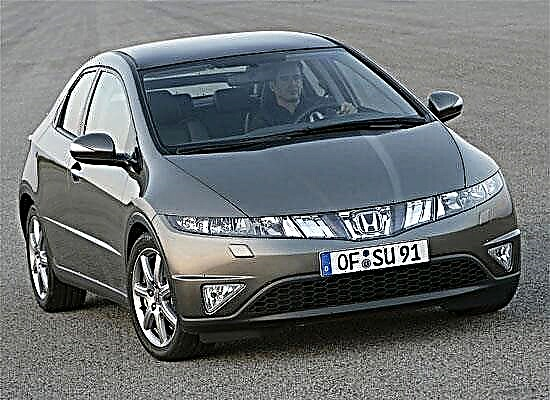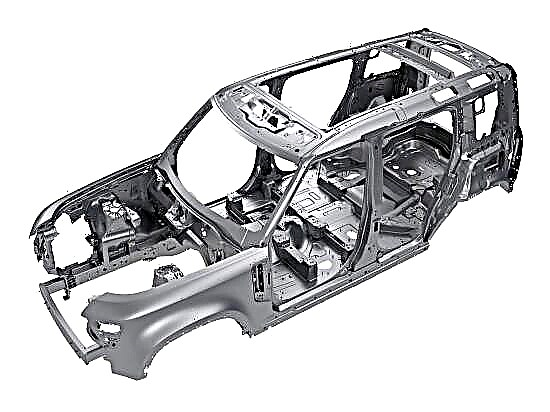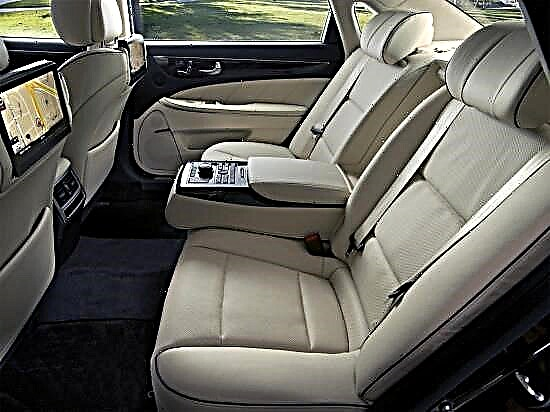This flagship of the automotive line of the Korean concern Hyundai has not been a newcomer to our market for a long time (the second generation model came out in 2009 - then its sales began first in South Korea, and then in China ... and in 2010, the "export version of Ekus" debuted in Detroit - which immediately entered the "top 10" of the most interesting models according to Forbes magazine and entered the Russian market in the same year).

In 2013, the executive sedan "Equus" underwent "point restyling", within which the technical filling of the car was also improved - which allowed the Koreans to "raise the bar of their ambitions" and seriously hope for a higher share in the "F-segment" (in July the same year, its assembly began at the facilities of the Avtotor plant in Kaliningrad) ... However, in Russia, the second-generation Ekus did not become widely known, but this does not mean at all that the sedan is bad or even terrible ... In any case, get acquainted with it is worth it, if only for comparison with the "Europeans" and "Japanese".

The exterior of this car is one of the main "negative points". In general, it is good enough, quite presentable, and it looks very expensive, but Hyundai Ekus is completely devoid of its own "zest" and recognizable features. In fact, the Koreans simply tried to create a car with the lines of the German giants of the segment, which, quite possibly, helped to increase the popularity of the model in the Asian market (where Equus is very popular), but is completely unsuitable for Russia and Europe.
We only add that the Korean executive sedan is available in two body styles: base and extended "Limousine".

As for the dimensions, this sedan fits well into the declared class: the length of the base body is 5160 mm, the length of the wheelbase is 3045 mm, the width of the body fits into the framework of 1890 mm, and the height is limited to 1490 mm. The Limousine version is 300 mm longer, i.e. its length is 5460 mm, and the wheelbase is 3345 mm.
The curb weight of the vehicle ranges from 1990 kg to 2240 kg (depending on equipment level).

Before restyling, the Hyundai Equus was scolded quite strongly for the simplicity of the interior, but in 2013 the Koreans corrected all the mistakes - they significantly raised the build quality and switched to more expensive finishing materials, which immediately brought this car to a completely different level. The cabin has become cozier, more comfortable and, most importantly, much quieter - almost like in a "German".

Already in the base, the sedan is equipped with comfortable seats with ventilation and heated front and rear, as well as electric adjustments and memory settings for the front row.
The back row seats are also adjustable, but only by backrest tilt and longitudinal position. All windows are equipped with UV protection, and the top-end versions are additionally equipped with electric sun blinds.

The driver's seat is also very comfortable, featuring a high level of ergonomics, as well as excellent equipment, including a multifunction steering wheel, several instrument panel options and an optional head-up display with a color image.
The level of comfort of the rear right seat, where the "main passenger" is located, is also at a fairly high level. This is especially noticeable in the "Limousine" version, which has a ventilated seat with massage function, an extended range of electric adjustments and a retractable footrest.
The luggage compartment of the Hyundai Ekus sedan holds no more than 520 liters of cargo.

The Russian version of Hyundai Motor Company's flagship sedan is offered to customers with two powerplant options.
- The basic modification is equipped with a 6-cylinder V-shaped gasoline unit from the Lambda line with a working volume of 3.8 liters (3778 cm³), a 24-valve timing mechanism and a direct fuel injection system. The engine complies with the Euro-4 environmental standard, and its maximum power is 334 hp. at 6400 rpm. The peak torque of the younger engine falls at around 395 Nm at 5100 rpm, which allows the sedan to accelerate from 0 to 100 km / h in 6.9 seconds, or reach the upper speed threshold of 240 km / h. For its capabilities, the engine is quite economical: in urban traffic jams, a 334-horsepower power unit will eat about 15.8 liters, on the highway it will keep within 8.0 liters, and in the combined cycle, gasoline consumption should not exceed 10.9 liters.
- The top engine in our market is a V-shaped gasoline unit of the Tau line, which has 8 cylinders with a total displacement of 5.0 liters (5038 cm³), a 32-valve timing mechanism, a variable valve timing system, a variable-length intake manifold and direct fuel injection system. Note that the flagship motor over the past few years has been among the top ten engines according to the Ward's Auto World magazine, in no way inferior to competitors from Japan and Germany. The upper power threshold of the 5.0-liter "monster" is declared by the manufacturer at the level of 430 hp, developed at 6400 rpm, and the peak torque reached at 5000 rpm falls at around 510 Nm. The dynamic characteristics of the Equus sedan with the flagship engine under the hood are quite attractive: acceleration from 0 to 100 km / h takes no more than 5.8 seconds in the base body and 6.0 seconds in the limousine body, and the top speed in both cases is electronically limited at the level of 240 km / h. As for fuel consumption, in city conditions the sedan will eat 17.6 liters, on the highway it will cost 9.3 liters, and in mixed mode it will be limited to 12.3 liters. The “Limousine” version consumes, respectively: 19.1 liters, 9.1 liters and 12.8 liters of fuel. Note that both engines available in our country work only in tandem with an 8-band "automatic" Hyundai's own production.
For Equus, the Koreans have developed an independent platform with a 50:50 weight distribution along the axles, adapted for a rear-wheel drive car.
There are two suspension options:
- At the base, the sedan is equipped with a spring suspension with independent multi-link structures at the front and rear.
- In the "top" version, Hyundai Ekus receives an adaptive air suspension with automatic adjustment of the ride height and the stiffness of the shock absorbers.
Note that in the basic version, the sedan gets a clearance of 150 mm, and in the version with air suspension, the clearance is adjustable in the range from 145 to 175 mm.
On all wheels, the Koreans use ventilated disc brakes, and the rack and pinion steering gear is complemented by an electro-hydraulic power steering with a variable gear ratio.
It is worth saying a few words about driving performance. During the tests, the sedan demonstrated excellent handling at all speeds, good smoothness and information content of the braking system. In general, in urban conditions the behavior of Equus is almost identical to the behavior of executive sedans from the German "big three", but the Korean is able to give Japanese competitors a small head start. Ekus gives up except in front of the Russian pits, with which even the air suspension does poorly, so it is not recommended to travel to nature or to a distant province on it.
As befits a serious executive car, the Equus offers a high level of safety for the driver and passengers. Already in the base, the sedan is equipped with ABS, EBD, BAS, ESP, VSM, TCS systems and a blind spot monitoring system. The saloon is equipped with nine airbags, belt pretensioners, active front head restraints and a crash-proof steering column.
The main trump card of Hyundai Equus is the price, because the Korean executive sedan, the only one in the segment, managed to drop below “3 million rubles” (according to 2014 data).
For the basic version of "Luxury" dealers ask for only 2,990,000 rubles.For this money, the buyer will receive a sedan with a junior engine, 18-inch alloy wheels, adaptive xenon headlights, rear LED lights, foglights, 3-zone climate control, cruise control, a rear view camera, rain and light sensors, heated front and rear glass, circular parking sensors, leather interior with natural wood inserts, automatic door closers, as well as a premium Lexicon audio system with 17 speakers and a subwoofer.
The "Elite" trim level is estimated by dealers at 3,230,000 rubles, the "Royal" version with a 5.0-liter engine will cost at least 3,740,000 rubles, and dealers ask for at least 4,040,000 rubles for the performance of "Limousine".


